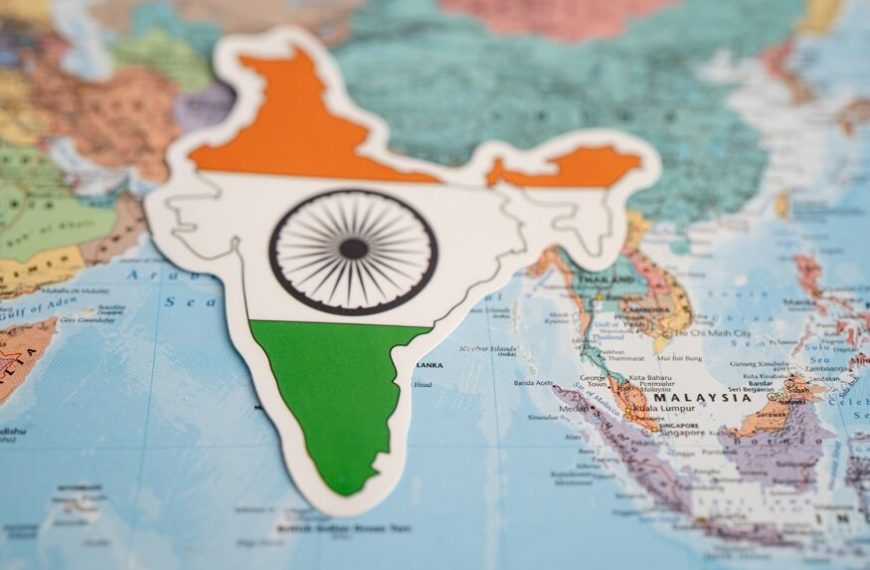The eminent American author Mark Twain is credited as saying, “India is the mother of history, the grandmother of legend, the great-grandmother of tradition, the cradle of the human race, and the birthplace of human speech.”
With a population of over 1.4 billion, India is the largest populous democracy in the world. It is situated in South Asia. The nation is renowned for its rich history, many different cultures, and faiths. These ten fascinating facts about India are likely to enchant you, regardless of whether you’re planning a trip there or are just captivated by the nation.
India has always captivated people all around the world with its rich history, vibrant culture, and varied customs. India has many lesser-known aspects that make it an even more fascinating travel destination, even if the nation is most recognised for its famous sites, delectable food, and Bollywood films. This blog will explore the top 10 fascinating (and some comparatively unknown) facts about India. This post will undoubtedly catch your attention, regardless of whether you’re an adult trying to broaden your horizons or a parent looking for information on India for your children.
Varanasi is the oldest and continually inhabited city in the world
Varanasi, sometimes referred to as Kashi or Benaras, is one of the world’s oldest cities, rich in millennia of history, and continues to thrive today. The holy city of Varanasi, Uttar Pradesh, is situated on the banks of the Ganges River and is a major hub for Hindu pilgrimage, poetry, culture, and spirituality. As Mark Twain once said, “It looks twice as old as all of them put together and is older than history, tradition, and even legend.”
Varanasi is a charming location that is very important to tourists because of the Ganges River and its cultural significance. In Varanasi, there are more than a hundred ghats that have stairs that go to the riverbank. It is not unusual to see sadhus and priests in the morning and evening, either praying or meditating. However, the intricate cremation rites of the Manikarnika Ghat make it the most striking.
The first country to mine and lead diamond production
Records indicate that since the 4th century BC, India has been the world’s only supply of diamonds for more than a millennium. One of India’s greatest sources of pride is this fact. The Krishna Nagar Delta’s alluvial formation was the diamond’s source. Diamonds were not discovered in Brazil until the 18th century. Diamond mining continues despite India’s decline as the world’s leading diamond producer since the 1900s. Golconda in Andhra Pradesh, Panna in Madhya Pradesh, and Mahasamund in Chhattisgarh are the most sought-after locations for large-scale industrial diamond mining.
Cows have a sacred status
India is perhaps the only nation on earth where the common cow is worshiped and has attained a position equal to that of God. According to mythology, cows have been a feature of significant Indian rites since the fourth century BC. It is closely related to Lord Krishna, who is frequently depicted in ancient epics as a cowherd. All items made from cows, such as ghee, milk, curd, and so on, are likewise prized. India is home to many Gaushalas, also known as Cow Shelters, where cows are cared for and fed.
The largest number of vegetarians in the world
This is not one of the most well-known unknown facts about India. In the globe, the greatest concentration of vegetarians is found in India. In India, the primary cause for vegetarianism— more than 81% of adults abstain from meat on specific days— is religion. Additionally, the great majority of Indian Buddhists and Jain people consume only plants and abstain from meat. Among other international fast food businesses, it wouldn’t be shocking to see vegetarian menus at KFC and McDonald’s in India.
The popular game ‘Snakes and Ladders’ is India’s contribution to the world
Many board games, most notably the traditional game Snakes and Ladders, are said to have originated in India. The majority of us have played a peculiar variation of this game without actually understanding where it came from. According to mythology, it was first established in the early 2nd century BC and was called Mokshapat or Moksha Patamu. According to a different narrative, Swami Gyandev created this dice game for use on boards about the 13th century BC. Kids learned moral lessons from the game, which also highlighted the consequences of Kama (desire) and Karma (destiny). In the end, the Milton Bradley Company released the British version of this game in 1943 under the title Chutes & Ladders.
India stands third for its hefty population of billionaires
According to Forbes’ 35th annual list of billionaires, India is home to the third-largest population of billionaires worldwide, behind the US and China. This is just another incredible truth about India. On the list of the richest persons in Asia, chairman of Reliance Industries Limited Mukesh Ambani is ranked first, followed by chairman of the Adani Group Gautam Adani and HCL Technologies Founder Shiv Nadar. As astounding as it may appear, India already boasts more than 140 billionaires.
The largest religion in India, Hinduism is the oldest in the world
Based on the 2011 census, India has the highest Hindu population in the world, with approximately 966.3 million people identifying as Hindu. With more than 94% of the world’s Hindu population, India is undoubtedly the world’s largest Hindu hotspot, with over 5000 years of history. Hinduism has no recorded origin, although it took off when the Vedic doctrines appeared, about 1500–500 BC. Between 500 BC and 300 AD, however, it was known that the customs and cultural phenomena extended widely. Hinduism is not pure polytheism, despite what some people think. It has faith in the creator, Brahma.
India is the largest spice producer globally
India’s contribution to the global spice business is among the most astounding statistics about the country. India grows more than 70% of the world’s spice types, including cardamom, cinnamon, saffron, turmeric, nutmeg, vanilla, and cloves—the most widely used ones. In addition, India is the global market leader in the consumption of spices. It makes sense that Indian kitchens are stocked with a wide variety of spices that are used consistently in daily cooking. The Vedas also describe using spices to treat common illnesses, which is significant to Indian culture. Visit Khari Baoli in Delhi if you’ve ever wanted to lose yourself in the smells and intricate maze of spice alleyways. Presumably the biggest spice bazaar in Asia, it is breathtakingly gorgeous and a sensory overload. Nevertheless, if this is your first visit, do bring a guide.
The magnetic hill that defies gravity
Although hardly many people are aware of Magnetic Hill, it is undoubtedly one of India’s most interesting facts. Magnetic Hill defies gravity categorically. You heard correctly! It is around 30 kilometers away from Leh and is also referred to as Gravity Hill. This is a section of the Leh-Kargil highway, in fact. Numerous visitors swarm to witness this enigmatic occurrence, and you may find signage with appropriate directions that will enable you to appreciate and benefit from it fully. Your car will start moving upward instead of downhill. This is all going to occur when your automobile is in neutral. A plethora of wild notions explain this peculiar phenomenon.
According to one scientific explanation, the cars are drawn downhill by a powerful magnetic attraction on the hill. A further hypothesis proposes the existence of an optical illusion. The topography blocks the horizon, giving the eyes an illusion. We find it challenging to distinguish between the hill’s slopes as a result. The absence of a horizon or level surface gives the impression that the scene is getting worse, while in reality, the reverse is true. July to October is the perfect time to visit Magnetic Hill if you are planning a Leh Tour and wish to unravel its secrets.
Mystery glacial lake with skeletons
Roopkund, often called Skeleton Lake, is a unique high-altitude glacier lake in the Indian Himalayas. Located in the state of Uttarakhand, Roopkund is a mystical lake that sits at 16,499 feet above sea level. It is simply a little body of water that is home to hundreds of unidentified people’s skeletons. Due to its skeleton remnants, this picturesque walk draws visitors from all over the world. A skeleton floating in the lake was discovered in 1942 by British forest ranger H K Madhwal. During World War II, it was first thought to be a component of the Japanese invading troops.
Nonetheless, the skeletons’ age was determined by carbon dating to be more than 1200 years. Although the skeletons had comparable head wounds, the reason for their deaths is still unknown because they passed away at various times. It is determined that a hailstorm may have been the cause of their unexpected deaths, although it is still unclear why so many individuals were traveling at such high elevations. The Roopkund trip has a total length of around 53 miles, and finishing it might take you five to seven days.
These 10 fascinating facts just scrape the surface of India’s beauty and complexity— a place of endless delights. India continues to awe the globe with its variety and rich history, from its ancient origins in chess and Sanskrit to its modern marvels like the Statue of Unity. There is something for everyone to learn and enjoy about India, whether they are seeking obscure or kid-friendly information about the nation. Therefore, the next time you make travel plans, think about discovering the fascinating tapestry of India— a nation where modernity and tradition live together and where there is a tale to be told around every corner.
















